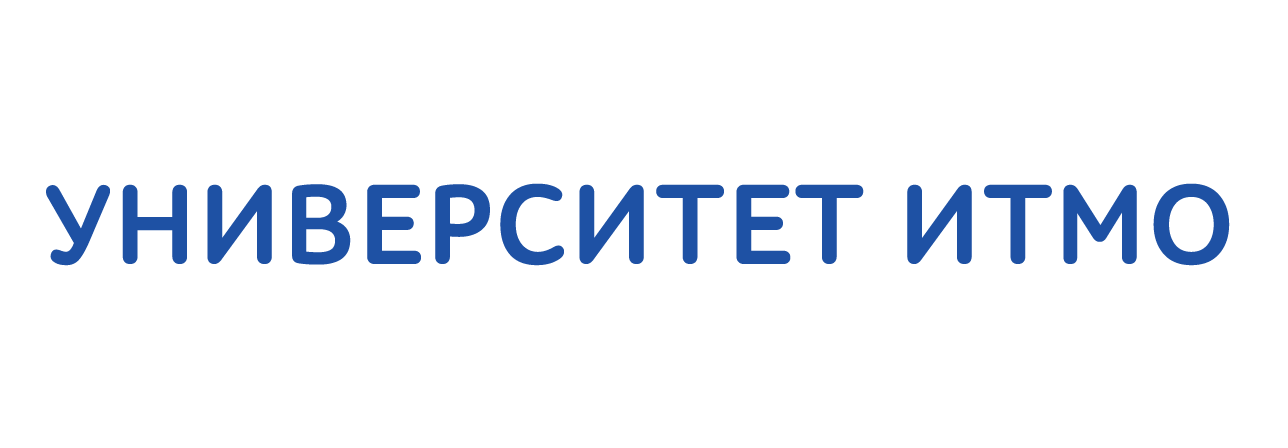Меню
Публикации
2025
2024
2023
2022
2021
2020
2019
2018
2017
2016
2015
2014
2013
2012
2011
2010
2009
2008
2007
2006
2005
2004
2003
2002
2001
Главный редактор

НИКИФОРОВ
Владимир Олегович
д.т.н., профессор
Партнеры
doi: 10.17586/2226-1494-2020-20-6-815-827
УДК 004.031.4 004.032.2
ПРИМЕНЕНИЕ КОНЦЕПЦИИ ЦИФРОВЫХ ДВОЙНИКОВ НА ЭТАПАХ ЖИЗНЕННОГО ЦИКЛА ПРОИЗВОДСТВЕННЫХ СИСТЕМ
Читать статью полностью
Язык статьи - русский
Ссылка для цитирования:
Аннотация
Ссылка для цитирования:
Шведенко В.Н., Мозохин А.Е. Применение концепции цифровых двойников на этапах жизненного цикла производственных систем // Научно-технический вестник информационных технологий, механики и оптики. 2020. Т. 20. № 6. С. 815-827. doi: 10.17586/2226-1494-2020-20-6-815-827
Аннотация
Предмет исследования. Представлен анализ современной концепции цифровых двойников применительно к производственным системам. Приведен обзор характеристик и параметров цифрового двойника, создающих преимущества применения данной концепции для производственных систем на этапах их жизненного цикла. Предложены варианты технической реализации концепции цифровых двойников для совершенствования технологических процессов производственных систем на следующих этапах жизненного цикла: идея, проект, реализация, эксплуатация, утилизация. Метод. Приведен ретроспективный анализ научных трудов, посвященных методологии и практическому применению программно-ориентированных подходов к проектированию, реализации и эксплуатации производственных систем Индустрии 4.0. Дана экспертная оценка и выполнен анализ при- менимости концепции цифровых двойников на этапах жизненного цикла производственных систем. Основные результаты. На основе анализа зарубежных исследований за последние десять лет определены и сгруппированы по значимости основные характеристики цифрового двойника, влияющие на эффективность применения концепции в производственных системах. Сформулированы преимущества и недостатки использования программно- ориентированного подхода к проектированию, реализации и эксплуатации производственных систем. Практическая значимость. Определены характеристики цифрового двойника, влияющие на эффективность его использования на этапах жизненного цикла производственных систем. Предложены варианты технической реализации современной концепции цифровых двойников для производственных систем с применением перспективных цифровых технологий и интеллектуальных электронных устройств. Систематизированы требования к функциональности, производительности, точности соответствия состояния виртуальной и физической среды, а также качественным характеристикам цифрового двойника, что позволит проводить оценку применимости цифровых двойников для решения существующих задач контроля и управления в производственных системах.
Ключевые слова: цифровой двойник, цифровая среда проектирования, применение цифровых двойников, жизненный цикл продукта, киберфизические системы
Список литературы
Список литературы
1. Radhakisan B., Gill H. Cyber-physical systems // The Impact of Control Technology. 2011. Р. 161–166.
2. Rosen R., Wichert G., Lo G., Bettenhausen K.D. About the importance of autonomy and digital twins for the future of manufacturing // IFAC-PapersOnLine. 2015. V. 48. N 3. Р. 567–572. doi: 10.1016/j.ifacol.2015.06.141
3. Laengle S., Modak N.M., Merigó J.M., De La Sotta C. Thirty years of the international journal of computer integrated manufacturing: a bibliometric analysis // International Journal of Computer Integrated Manufacturing. 2018. V. 31. N 12. Р. 1247–1268. doi: 10.1080/0951192X.2018.1529434
4. Abramovici M., Göbel J.C., Savarino P. Reconfiguration of smart products during their use phase based on virtual product twins // CIRP Annals - Manufacturing Technology. 2017. V. 66. N 1. Р. 165–168. doi: 10.1016/j.cirp.2017.04.042
5. Ayani M., Ganebäck M., Ng A.H.C. Digital Twin: applying emulation for machine reconditioning // Procedia CIRP. 2018. V. 82. Р. 243–248. doi: 10.1016/j.procir.2018.03.139
6. Baruffaldi G., Accorsi R., Manzini R. Warehouse management system customization and information availability in 3pl companies: a decision-support tool // Industrial Management & Data Systems. 2019. V. 119. N 2. Р. 251–273. doi: 10.1108/IMDS-01-2018-0033
7. Stark R., Kind S., Neumeyer S. Innovations in digital modelling for next generation manufacturing system design // CIRP Annals - Manufacturing Technology. 2017. V. 66. N 1. Р. 169–172. doi: 10.1016/j.cirp.2017.04.045
8. Guerineau B., Bricogne M., Durupt A., Rivest L. Mechatronics vs. cyber physical systems: Towards a conceptual framework for a suitable design methodology // Proc. 11th France–Japan and 9th Europe-Asia Congress on Mechatronics (MECATRONICS) / 17th International Conference on Research and Education in Mechatronics (REM). Compiègne, France. 2016. Р. 314–320. doi: 10.1109/MECATRONICS.2016.7547161
9. Lee E.A. Cyber physical systems: design challenges // Proc. 11th IEEE International Symposium on Object/Component/Oriented Real-Time Distributed Computing (ISORC 2008). Orlando, FL, USA. 2008. Р. 363–369. doi: 10.1109/ISORC.2008.25
10. Lee J., Bagheri B., Kao H.-A. A Cyber-Physical Systems architecture for Industry 4.0-based manufacturing systems // Manufacturing Letters. 2015. V. 3. Р. 18–23. doi: 10.1016/j.mfglet.2014.12.001
11. Grieves M. Digital twin: manufacturing excellence through virtual factory replication // White paper. 2014. V. 1. P. 1–7.
12. Grieves M., Vickers J. Digital Twin: Mitigating unpredictable, undesirable emergent behavior in complex systems // Transdisciplinary Perspectives on Complex Systems: New Findings and Approaches. Springer, 2017. P. 85–113. doi: 10.1007/978-3-319-38756-7_4
13. Xiang F., Zhi Z. Jiang G. Digital twins technology and its data fusion in iron and steel product life cycle // Proc. 15th IEEE International Conference on Networking, Sensing and Control (ICNSC). 2018. P. 1–5. doi: 10.1109/ICNSC.2018.8361293
14. Söderberg R., Wärmefjord K., Carlson J.S., Lindkvist L. Toward a Digital Twin for real-time geometry assurance in individualized production // CIRP Annals - Manufacturing Technology. 2017. V. 66. P. 137–140. doi: 10.1016/j.cirp.2017.04.038
15. Guo F., Zou F., Liu J., Wang Z. Working mode in aircraft manufacturing based on digital coordination model // International Journal of Advanced Manufacturing Technology. 2018. V. 98. N 5-8. P. 1547–1571. doi: 10.1007/s00170-018-2048-0
16. Zhang M., Zuo Y., Tao F. Equipment energy consumption management in digital twin shop-floor: A framework and potential applications // Proc. 15th IEEE International Conference on Networking, Sensing and Control (ICNSC). 2018. P. 1–5. doi: 10.1109/ICNSC.2018.8361272
17. Miled Z.B., French M.O. Towards a reasoning framework for digital clones using the digital thread // Proc. 55th AIAA Aerospace Sciences Meeting. 2017. P. 0873. doi: 10.2514/6.2017-0873
18. Schroeder G.N., Steinmetz C., Pereira C.E., Espindola D.B. Digital twin data modeling with automationML and a communication methodology for data exchange // IFAC-PapersOnLine. 2016. V. 49. N 30. P. 12–17. doi: 10.1016/j.ifacol.2016.11.115
19. Talkhestani B.A., Jazdi N., Schloegl W., Weyrich M. Consistency check to synchronize the Digital Twin of manufacturing automation based on anchor points // Procedia CIRP. 2018. V. 72. P. 159–164. doi: 10.1016/j.procir.2018.03.166
20. Torkamani A., Andersen K.G., Steinhubl S.R., Topol E.J. High-definition medicine // Cell. 2017. V. 170. N 5. P. 828–843. doi: 10.1016/j.cell.2017.08.007
21. Glaessgen E., Stargel D. The digital twin paradigm for future NASA and U.S. Air Force vehicles // Proc. 53rd AIAA/ASME/ASCE/AHS/ASC Structures, Structural Dynamics and Materials Conference 20th AIAA/ASME/AHS Adaptive Structures Conference 14th AIAA. 2012. P. 1818. doi: 10.2514/6.2012-1818
22. Cai Y., Starly B., Cohen P., Lee Y.-S. Sensor data and information fusion to construct digital-twins virtual machine tools for cyber-physical manufacturing // Procedia Manufacturing. 2017. V. 10. P. 1031–1042. doi: 10.1016/j.promfg.2017.07.094
23. Zhang H., Liu Q., Chen X., Zhang D., Leng J. A digital twin-based approach for designing and multi-objective optimization of hollow glass production line // IEEE Access. 2017. V. 5. P. 26901–26911. doi: 10.1109/ACCESS.2017.2766453
24. Weyer S., Meyer T., Ohmer M., Gorecky D., Zühlke D. Future modeling and simulation of cps-based factories: an example from the automotive industry // IFAC-PapersOnLine. 2016. V. 49. N 31. P. 97–102. doi: 10.1016/j.ifacol.2016.12.168
25. Guo J., Zhao N., Sun L., Zhang S. Modular based flexible digital twin for factory design // Journal of Ambient Intelligence and Humanized Computing. 2019. V. 10. N 3. P. 1189–1200. doi: 10.1007/s12652-018-0953-6
26. Uhlemann T.H.J., Schock C., Lehmann C., Freiberger S., Steinhilper R. The digital twin: demonstrating the potential of real time data acquisition in production systems // Procedia Manufacturing. 2017. V. 9. P. 113–120. doi: 10.1016/j.promfg.2017.04.043
27. Kraft E.M. Developing a digital thread / digital twin aerodynamic performance authoritative truth source // Proc. 2018 Aviation Technology, Integration, and Operations Conference. 2018. P. 4003. doi: 10.2514/6.2018-4003
28. Hu L., Nguyen N.T., Tao W., Leu M.C., Liu X.F., Shahriar M.R., Al Sunn S.M.N. Modeling of cloud-based digital twins for smart manufacturing with MT connect // Procedia Manufacturing. 2018. V. 26. P. 1193–1203. doi: 10.1016/j.promfg.2018.07.155
29. Cheng J., Chen W., Tao F., Lin C.-L. Industrial IoT in 5G environment towards smart manufacturing // Journal of Industrial Information Integration. 2018. V. 10. P. 10–19. doi: 10.1016/j.jii.2018.04.001
30. Qi Q., Tao F. Digital twin and big data towards smart manufacturing and industry 4.0: 360 degree comparison // IEEE Access. 2018. V. 6. P. 3585–3593. doi: 10.1109/ACCESS.2018.2793265
31. Schleich B., Anwer N., Mathieu L., Wartzack S. Shaping the digital twin for design and production engineering // CIRP Annals - Manufacturing Technology. 2017. V. 66. N 1. P. 141–144. doi: 10.1016/j.cirp.2017.04.040
32. Lorenz M., Rüßmann M., Gerbert P., Waldner M., Justus J., Engel P., Harnisch M. Industry 4.0: the future of productivity and growth in manufacturing industries. Boston Consulting Group, 2015. 20 p. [Электронный ресурс]. URL: https://image-src.bcg.com/Images/Industry_40_Future_of_Productivity_April_2015_tcm9-61694.pdf (дата обращения: 04.09.2020).
33. Kuts V., Modoni G.E., Terkaj W., Tähemaa T., Sacco M., Otto T. Exploiting factory telemetry to support virtual reality simulation in robotics cell // Lecture Notes in Computer Science (including subseries Lecture Notes in Artificial Intelligence and Lecture Notes in Bioinformatics). 2017. V. 10324. P. 212–221. doi: 10.1007/978-3-319-60922-5_16
34. Zhang H., Zhang G., Yan Q. Dynamic resource allocation optimization for digital twin-driven smart shopfloor // Proc. 15th IEEE International Conference on Networking, Sensing and Control (ICNSC). 2018. P. 1–5. doi: 10.1109/ICNSC.2018.8361283
35. Leng J., Zhang H., Yan D., Liu Q., Chen X., Zhang D. Digital twin-driven manufacturing cyber-physical system for parallel controlling of smart workshop // Journal of Ambient Intelligence and Humanized Computing. 2019. V. 10. N 3. P. 1155–1166. doi: 10.1007/s12652-018-0881-5
36. Cheng Y., Zhang Y., Ji P., Xu W., Zhou Z., Tao F. Cyber-physical integration for moving digital factories forward towards smart manufacturing: a survey // International Journal of Advanced Manufacturing Technology. 2018. V. 97. N 1-4. P. 1209–1221. doi: 10.1007/s00170-018-2001-2
37. Zheng Y., Yang S., Cheng H. An application framework of digital twin and its case study // Journal of Ambient Intelligence and Humanized Computing. 2019. V. 10. N 3. P. 1141–1153. doi: 10.1007/s12652-018-0911-3
38. Botkina D., Hedlind M., Olsson B., Henser J., Lundholm T. Digital twin of a cutting tool // Procedia CIRP. 2018. V. 72. P. 215–218. doi: 10.1016/j.procir.2018.03.178
39. Kritzinger W., Karner M., Traar G., Henjes J., Sihn W. Digital twin in manufacturing: a categorical literature review and classification // IFAC-PapersOnLine. 2018. V. 51. N 11. P. 1016–1022. doi: 10.1016/j.ifacol.2018.08.474 40. Lohtander M., Ahonen N., Lanz M., Ratava J., Kaakkunen J. Micro manufacturing unit and the corresponding 3D-model for the digital twin // Procedia Manufacturing. 2018. V. 25. P. 55–61. doi: 10.1016/j.promfg.2018.06.057
41. Zhuang C., Liu J., Xiong H. Digital twin-based smart production management and control framework for the complex product assembly shop-floor // International Journal of Advanced Manufacturing Technology. 2018. V. 96. N 1-4. P. 1149–1163. doi: 10.1007/s00170-018-1617-6
42. Clement S.J., McKee D.W., Romano R., Xu J., Lopez J.M., Battersby D. The Internet of Simulation: enabling agile model based systems engineering for cyber-physical systems // Proc. 12th System of Systems Engineering Conference (SoSE). 2017. P. 7994948. doi: 10.1109/SYSOSE.2017.7994948
43. Negri E., Fumagalli L., Macchi M. A review of the roles of digital twin in CPS-based production systems // Procedia Manufacturing. 2017. V. 11. P. 939–948. doi: 10.1016/j.promfg.2017.07.198
44. Stark J. Product lifecycle management // Product Lifecycle Management (V. 1). 21st Century Paradigm for Product Realisation. Springer, 2015. P. 1–29. doi: 10.1007/978-3-319-17440-2_1
45. Damjanovic-Behrendt V. A digital twin-based privacy enhancement mechanism for the automotive industry // Proc. 9th International Conference on Intelligent Systems (IS). 2018. P. 272–279. doi: 10.1109/IS.2018.8710526
46. Beregi R., Szaller Á., Kádár B. Synergy of multi-modelling for process control // IFAC-PapersOnLine. 2018. V. 51. N 11. P. 1023–1028. doi: 10.1016/j.ifacol.2018.08.473
47. Zheng P., Lin T.J., Chen C.H., Xu X. A systematic design approach for service innovation of smart product-service systems // Journal of Cleaner Production. 2018. V. 201. P. 657–667. doi: 10.1016/j.jclepro.2018.08.101
48. Luo W., Hu T., Zhang C., Wei Y. Digital twin for CNC machine tool: modeling and using strategy // Journal of Ambient Intelligence and Humanized Computing. 2019. V. 10. N 3. P. 1129–1140. doi: 10.1007/s12652-018-0946-5
49. Schroeder G., Steinmetz C., Pereira C.E., Muller I., Garcia N., Espindola D., Rodrigues R. Visualising the digital twin using web services and augmented reality // Proc. 14th IEEE International Conference on Industrial Informatics (INDIN). 2016. P. 522–527. doi: 10.1109/INDIN.2016.7819217
50. El Saddik A. Digital twins: the convergence of multimedia technologies // IEEE MultiMedia. 2018. V. 25. N 2. P. 87–92. doi: 10.1109/MMUL.2018.023121167
51. Qi Q., Tao F., Zuo Y., Zhao D. Digital twin service towards smart manufacturing // Procedia CIRP. 2018. V. 72. P. 237–242. doi: 10.1016/j.procir.2018.03.103
52. Macchi M., Roda I., Negri E., Fumagalli L. Exploring the role of digital twin for asset lifecycle management // IFAC-PapersOnLine. 2018. V. 51. N 11. P. 790–795. doi: 10.1016/j.ifacol.2018.08.415
53. Landolfi G., Barni A., Menato S., Cavadini F.A., Rovere D., Dal Maso G. Design of a multi-sided platform supporting CPS deployment in the automation market // Proc. 1st IEEE International Conference on Industrial Cyber-Physical Systems (ICPS). 2018. P. 684–689. doi: 10.1109/ICPHYS.2018.8390790
54. Bitton R., Gluck T., Stan O., Inokuchi M., Ohta Y., Yamada Y., Yagyu T., Elovici Y., Shabtai A. Deriving a cost-effective digital twin of an ICS to facilitate security evaluation // Lecture Notes in Computer Science (including subseries Lecture Notes in Artificial Intelligence and Lecture Notes in Bioinformatics). 2018. V. 11098. P. 533–554. doi: 10.1007/978-3-319-99073-6_26
















